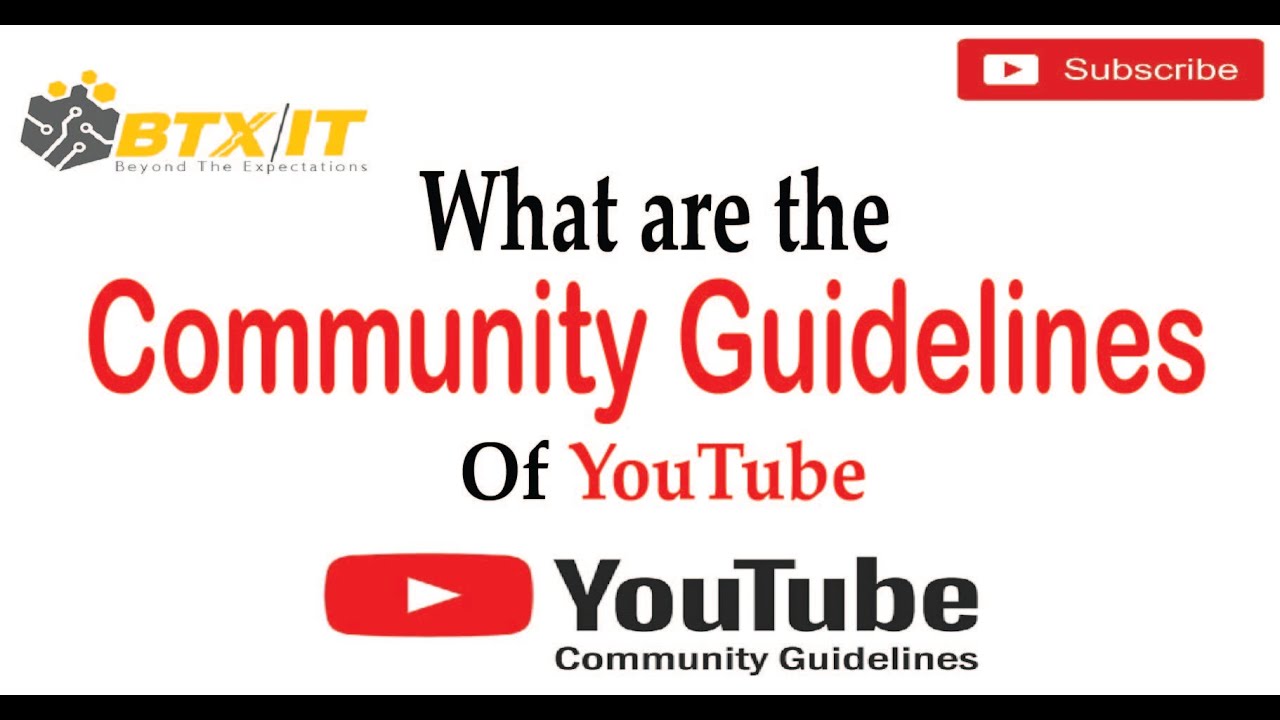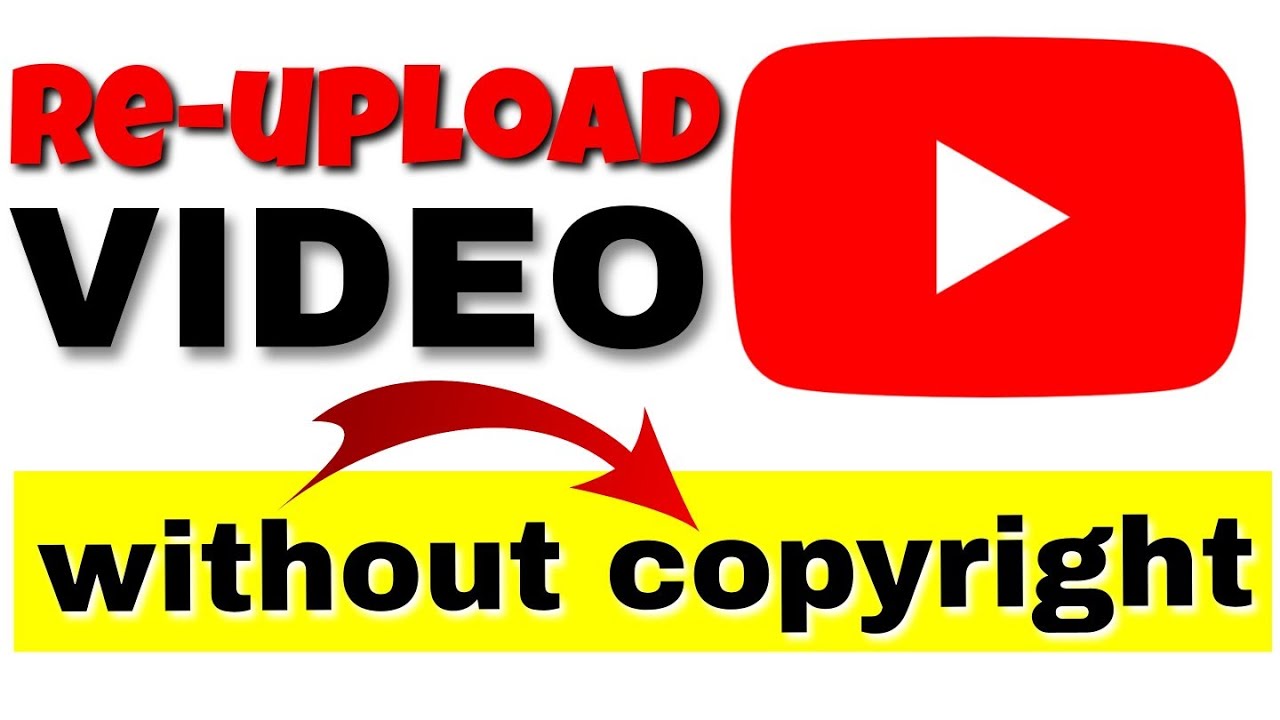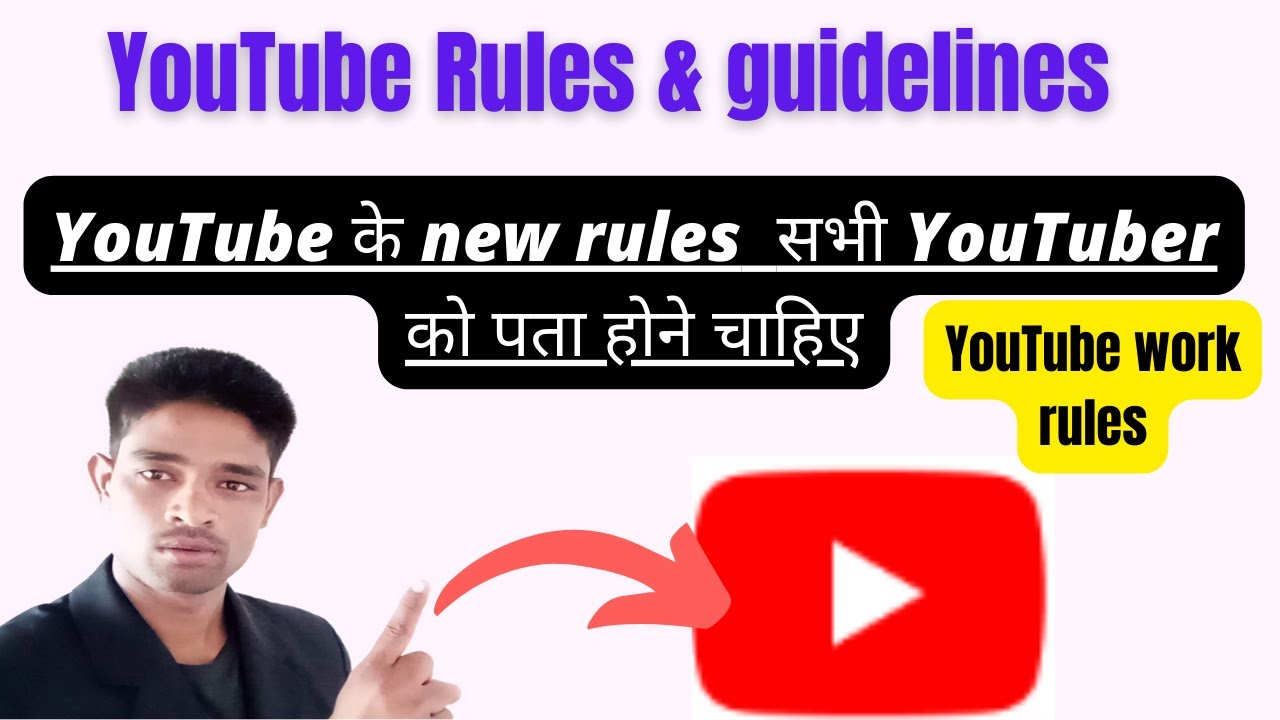In the ever-evolving world of digital content, reuploading a YouTube video can seem tempting, especially if you believe the content deserves a second chance or if you think you can present it better. However, it's crucial to understand that not all video reuploads are created equal. The nuances of copyright laws, platform policies, and ethical considerations can make the difference between a successful reupload and potential account termination. In this post, we'll explore the ins and outs of reuploading YouTube videos so you can make informed decisions.
Understanding YouTube's Copyright Policies

YouTube has strict policies regarding copyright to ensure that creators maintain control over their original content. Understanding these rules is vital for anyone considering reuploading a video. Here are some key points to keep in mind:
- Copyright Ownership: The original creator of a video holds the copyright unless explicitly stated otherwise. This means that if you don't own the rights or have permission, you can't simply reupload someone else's work.
- Fair Use Doctrine: In some cases, limited portions of copyrighted material can be used without permission under the fair use doctrine. However, this is a complex area of law and hinges on factors like the purpose, nature, amount, and effect of the use on the work's value.
- Content ID System: YouTube employs a Content ID system to automatically detect copyrighted material. If your reupload includes copyrighted content, the original creator can claim the video, leading to monetization or removal.
- Community Guidelines: Besides copyright, you'll need to adhere to YouTube's community guidelines. Violating these can result in your video being taken down or your account receiving strikes.
To sum up, be very cautious and informed about copyright issues before deciding to reupload videos on YouTube. It’s always best to create original content or obtain explicit permission to use someone else's material.
Also Read This: Unpacking AliExpress Videos: A Quick Guide to Downloading
When Should You Consider Reuploading a Video?

Reuploading a video on YouTube might seem like an easy fix, but it's essential to approach this decision with careful consideration. Here are a few key scenarios where reuploading could be beneficial:
- Outdated Content: If your video contains outdated information or references, a reupload can help bring your viewers the most current insights. For example, if you've made a tutorial that includes software no longer in use, updating that content can make it more valuable to your audience.
- Improved Quality: Maybe you’ve honed your video-making skills. If you’ve significantly improved your filming or editing techniques, consider reuploading for better visual and audio quality. Clear images and sound can lead to better viewer engagement.
- Changing Branding: If your channel has undergone a rebrand—new logo, new style, or even a shift in your content focus—a reupload can help align older videos with your current aesthetic and message.
- Addressing Errors: Did you notice a mistake after posting? Whether it's a factual error, a typo, or a glitch in the video, correcting these mistakes via a reupload can maintain your credibility.
- Performance Issues: If a video initially underperformed but has the potential for a second chance (think trending topics or seasonal relevance), a reupload might give it the visibility it deserves.
Also Read This: How to Download a Specific Portion of a Dailymotion Video
Best Practices for Reuploading Content

Reuploading isn't just about hitting that upload button again; it's about doing it strategically. Here are some best practices to consider:
- Improve the Metadata: Before reuploading, enhance the title, description, and tags. Research trending keywords related to your video topic and incorporate them to boost SEO.
- Create New Thumbnails: A fresh thumbnail can capture attention in ways that your previous one might not have. Use vibrant colors, readable text, and engaging visuals to draw clicks.
- Schedule the Reupload Wisely: Timing can be everything. Consider trends, holidays, or seasonal peaks that relate to your content when planning your reupload.
- Promote the Reupload: Spread the word! Share the reuploaded video across your social media platforms, and alert your subscribers through community posts to ensure they don’t miss it.
- Engage with Comments: Be active in the comments section of the reuploaded video. This not only boosts engagement but also shows your audience that you care about their feedback.
By keeping these best practices in mind, you can ensure that your reuploaded video stands a good chance of succeeding, reaching new audiences, and garnering renewed interest from long-time followers!
Also Read This: Easy Methods to Download Content from Behance.net
How to Optimize Reuploaded Videos for Better Engagement
When it comes to reuploading videos on YouTube, simply slapping the same content back onto the platform won't cut it. Instead, you'll want to take a more thoughtful approach to really capture your audience's attention and boost engagement. Here are some effective strategies:
- Update Thumbnails: Thumbnails are your first impression. Create eye-catching and relevant thumbnails that stand out and are better than the original. This is your chance to highlight the best part of your video!
- Refreshing Titles: Change up your title to make it more appealing. Utilize keywords that reflect current trends or search patterns. A compelling title can significantly increase click-through rates.
- Enhanced Descriptions: Revise your video description to include current information, relevant links, and timestamps for easy navigation. Include a call to action (CTA) to encourage viewers to subscribe or visit your website.
- Engage with Viewers: Respond to comments and questions in the comments section to create a sense of community. This interaction improves engagement and keeps viewers coming back for more.
- Leverage Playlists: Place your reuploaded video in relevant playlists. This helps viewers find similar content and keeps them watching, increasing overall engagement on your channel.
Remember, optimizing is about making the content relevant and engaging for today’s audience, not just recycling old material.
Also Read This: Can YouTubers See Who Viewed Their Video
Common Mistakes to Avoid When Reuploading
Reuploading a video can be a great strategy, but there are pitfalls you’ll want to avoid at all costs. Here’s a breakdown of some common mistakes that can lead to frustration and potential penalties:
- Ignoring Copyright Issues: Always double-check the copyright status of your content. Using copyrighted music or footage can erase any benefits of reuploading if you face a takedown notice.
- Neglecting SEO: Treat the reupload like a brand-new video. Failing to optimize your tags, descriptions, and titles means you’re missing out on valuable traffic. Don’t assume the old tags still apply!
- Using Poor Quality Video: If the original video quality is subpar, don’t reupload it without enhancing the quality. Poor visuals will turn viewers away rather than pulling them in.
- Lack of Promotion: Don’t forget to promote your reuploaded video across your social channels and community. Simply uploading it and waiting for views won’t yield results.
- Overloading with Ads: Too many ads can annoy viewers. If ads are a concern, assess how many you place in your reuploaded video, ensuring it retains its viewer-friendly nature.
Avoiding these mistakes will ensure that your reuploaded videos attract new viewers while maintaining the interest of your existing audience.
Also Read This: Saving Images from Google Slides: A Guide
Can You Reupload a YouTube Video? Rules and Best Practices
Reuploading videos on YouTube can be a complex issue, often tied to copyright laws and platform policies. Understanding the rules and best practices is essential to avoid potential penalties or copyright strikes. Here’s what you need to know.
YouTube's Copyright Policy: Before reuploading any video, you must ensure that you have the legal right to do so. YouTube takes copyright infringement seriously and has strict policies in place.
The following are key points regarding copyright and reuploading:
- *Original Content: If you created the video, you have the right to reupload it.
- Grant of Rights: If you collaborated with others, ensure that you have their permission to reupload shared content.
- Creative Commons: Videos under Creative Commons licenses can be reused, but always check the specific terms.
- Fair Use: Some content might be claimed under fair use, but this can be subjective and is not guaranteed.
Best Practices for Reuploading: If you determine that you can reupload a video, consider the following best practices:
| Best Practice | Description |
|---|---|
| Edit Footage | Modify the video to add new value or context. |
| Original Edit | Re-upload your original videos after making significant changes. |
| Credit Sources* | Always credit original creators if using their content. |
In summary, reuploading a video on YouTube is permissible if you possess the rights or permissions needed. Always adhere to copyright laws and adopt best practices to ensure compliance and maintain your channel's integrity.
Conclusion: Making Informed Decisions About Reuploading
Understanding the legalities and best practices surrounding reuploading YouTube videos empowers you to make informed decisions that protect your channel from copyright issues while contributing positively to the platform.
 admin
admin








